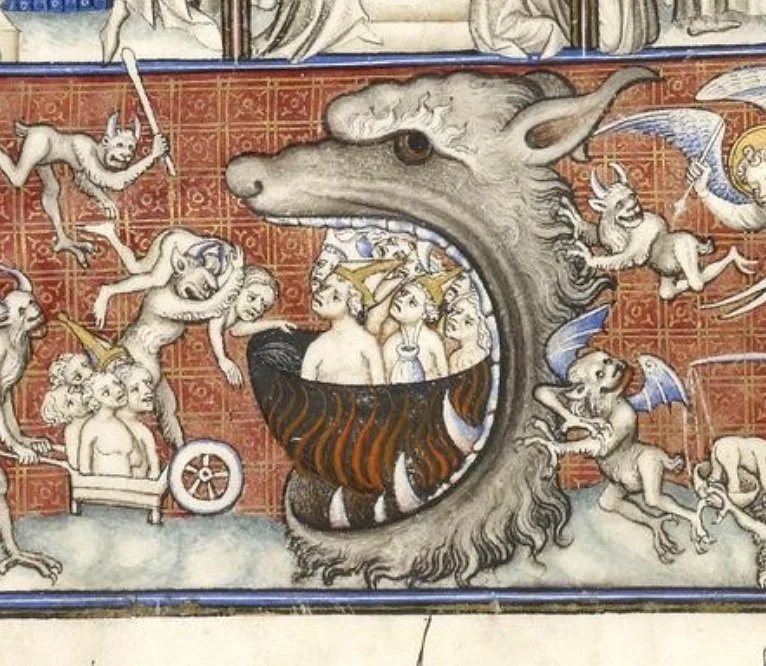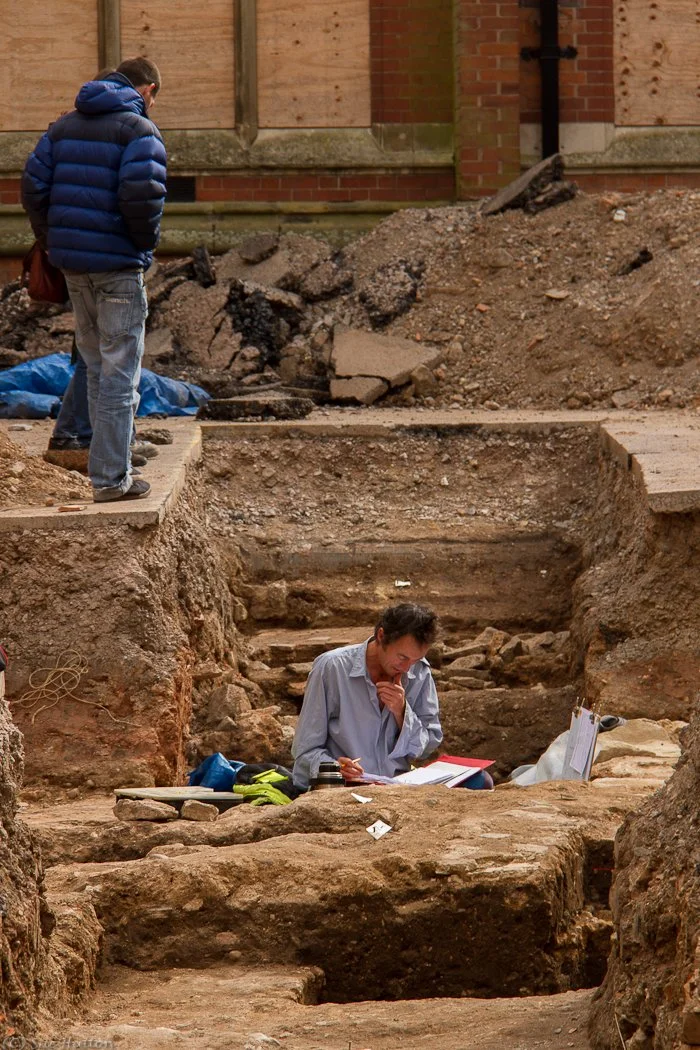This week we venture off to Bronze Age Anatolia to pay a visit to the Land of Hatti, and snoop through the royal mailbags.
Image: Stone figures at the Lion Gate of Hattusa
Anna takes Amber through a short history of the blues, specifically as one of the many musical genres to come out of the African diaspora. We start by learning about the clave, which is both an instrument and a rhythm. Then, we wander through a little history, before Anna hauls out a guitar and tries to remember how scales work. What is a blue note? Was there really a deal with the devil at a crossroads? Is a hotdog without a bun just a hotdog? All this and more!
Image: Library of Congress catalog card for Levee Camp Holler recording by Alan Lomax
Anna whisks Amber along on a tour of Neolithic sites in the Orkney Isles, an archipelago off the coast of Scotland. Around 5,000 years ago, this place was a hub for new ideas. Come with us as we visit the houses at Skara Brae, the "hidden" Neolithic village that re-emerged in 1850 (CE).
Spooktober 2023 reaches its climax with a special Halloween treat. Amber shares a series of spooky stories from her own childhood back in Appalachia, but not without exploring the many roles of folklore in societies-- all of 'em!
Hellhole, and welcome to The Dirt! Spooktober continues with an exploration of portals to the underworld. We're bringing you some unexpected sounds from Siberia, a couple of incredible caves, and the science behind sacrificial bulls dropping dead in ancient Rome. Plus, the Medieval European origin of the Hellmouth! Get your spelunking gear and maybe a comforting blanket or two as we journey to the underworld together.
Image: Saint Augustin, De Civitate Dei, traduit en français par Raoul de Presles (Livre I-X)
Source: gallica.bnf.fr
Bibliothèque nationale de France, Département des Manuscrits, Français 22912, fol. 2v.
Get your eye of newt and toe of frog ready, because something witchy this way comes! Amber is traveling once more for work, and Anna is dealing with some health issues, so we are releasing this Deep Cuts episode from 2020 where Anna tells Amber some witchy stories around the Spooktober campfire. More new Spooktober content coming soon!
Image: The Wicked Witch of the East as pictured in The Tin Woodman of Oz—illustration by John R. Neill (1918)
This week, it's first of four lightly haunted topics with (!!!!) MINIMAL BUMMERS! We're talking about necromancy, the practice of communing with the dead via ritual. We explore a cave full of lamps and skulls, climb into a ghost pit, and flip through some Babylonian spellbooks. Let's ponder the OB together!
In this episode, we cover a few examples of ways that urban archaeology adds richness to our understanding of how people in cities lived. What is a city? And importantly, is "city" the goal? Tune in to learn more!
Image: Archaeologist working in a car park in Leicester, UK (Sue Hutton)
Wendell Phillips was a self-proclaimed archaeologist, adventurer, and founder of the American Foundation for the Study of Man. He was also a significant catalyst for the beginning of Arabian archaeology as a discipline in the 1950s. Most contemporary accounts of Phillips reduce him to a cartoonish, smooth-talking cowboy-wannabe buffoon who stumbled into oil concessions that made him a gajillionaire. But there's way more to Wendell Phillips than that.
It's five years in, pals, and we're finally talking about Göbekli Tepe, with our signature flavor of "hey what about the people that lived there, though?" We discuss the idea of the "Neolithic Revolution," the brainchild(e) of archaeologist V.G. Childe, and the pitfalls of flattening time into "ages."
Image: German Archaeological Institute, photo E. Kücük. - Dietrich L, Meister J, Dietrich O, Notroff J, Kiep J, Heeb J, et al. (2019)
Land Acknowledgement
As science communicators in anthropology and archaeology, we hosts of The Dirt acknowledge that we hold a position of considerable privilege and opportunity, and commit ourselves to continuous learning, unlearning and reflection. We recognize that our disciplines, as well as our own lives, are rooted in and propped up by settler colonialism, white supremacy, and dispossession.
We now reside on the stolen ancestral territory of the Shawnee and Haudenosaunee and on the lands of the Muscogee and Cherokee Nations, but over its lifetime, The Dirt has also been produced on the unceded traditional territory of the Piscataway Conoy and Cedarville Band of Piscataway Indians, as well as that of the Yocha Dehe Wintun Nation, Patwin and Miwok peoples and all those dispossessed by Cession 296. We offer our show as a platform for Indigenous scholarship, history, and cultural expression, through citation and conversation, and we welcome the opportunity to host and compensate Indigenous scholars of archaeology and anthropology as interview guests.
Likewise, we encourage all listeners who reside in settler-colonial states to learn about on whose land they reside, their place in the ongoing process of colonization, and how to contribute materially to reparations and Indigenous sovereignty.





















First of all, how does evolution work? Who were our ancestors, where did they live and when, and how did these populations adapt and branch into different species over time? This is part one of Anna's crash course on early humans, with a second installment coming to the premium feed soon!
Image: Skulls of various members of the genus Homo. Photo: Museum of Natural History, London